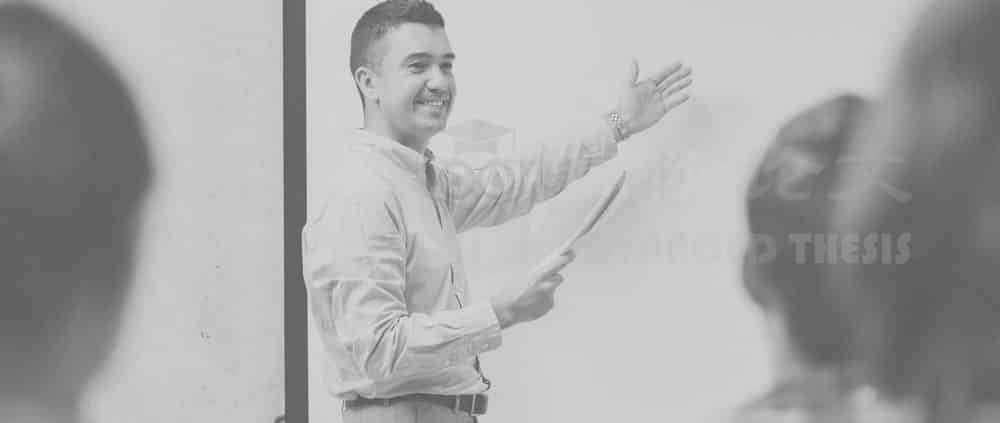英国代写:演员网络理论
英国代写:演员网络理论。演员网络理论(ANT)是由Michel Callon、Bruno Latour和John Law在20世纪70年代提出的。这些学者认为,人类是大多数社会科学研究的中心,在ANT之前存在着自然和社会、人类和非人类元素的二元分类(Lai & Tan, 2011)。然而,社会中存在着许多各种各样的非人类行为者。例如,在一项ICT政策中,除了决策者和相关利益相关者的参与作为推动ICT政策执行的必要因素外,还需要非人为因素的存在,如ICT基础设施、法律和监管框架,以形成一个联合的国家层面的智能生活倡议。接下来英国代写将对演员网络理论进行以下分析。
像Murdoch(1997)这样的研究人员认为,在考虑人和技术时存在遗漏,ANT理论假定这种划分实际上是人为形成的。ANT是通过观察社会世界的行动者和技术世界的人工制品,以对称的方式克服社会世界和技术世界的分裂(Tatnall & Gilding, 1999;Yoo, Lyytinen & Yang, 2005)。它提供了多样性的概念来解释与人、技术、研发、资源、制度和监管相关的项目或政策(Young, Borland & Coghill, 2010)。这与那些希望保持社会或技术状态不变的倡导者相反,后者为所有参与者提供了共同发展创新方法的视角(Tatnall & Gilding, 1999)。
蚂蚁理论的基础是纠正或打破传统世界二元的一种方式。ANT帮助纠正人类/非人类和技术/社会的不自然划分中引入的疏漏。蚂蚁理论(Howcroft, Mitev & Wilson, 2004)提出了对这些不同元素的对称处理。活性剂通常是基于行为和兴趣等属性及其社会或技术元素来考虑的(Yoo, Lyytinen & Yang, 2005)。演员网络是通过翻译过程中人类和非人类元素的合作参与而构建的(Murdoch, 1997)。拉图尔(Latour, 1983)以行动者网络理论的概念为分析出发点,认为网络的构建需要通过翻译的过程,即参与者必须有一致的目标和共识,网络内的关系是相互同意建立的。网络翻译的成功源于行动者之间的利益焦点(Murdoch, 1997)。这种兴趣的焦点是一个必须的通道点(Lai & Tan, 2011;劳与卡龙,1988年;Yoo, Lyytinen & Yang, 2005)。强制性通道点的意义在于,它解释了一个社会或行动者网络如何形成整体的相互关联。当所有的行动者都面临自己无法克服的障碍时,他们只能通过主要行动者的需求形成一个强制性的通道点,这是每个行动者共同关心的问题。该网络是建立在这个强制性的通道点上的。本论文使用四个概念作为镜头来调查智能生活在台湾的倡议,即问题化、相互评估登记和动员。强制通道点OPP被认为是行为者网络理论中与翻译初始问题化阶段相关的特征。OPP就像一个漏斗的窄端,在这里参与者聚集在一个主题或问题上。
Actor-network theory (ANT) was proposed by Michel Callon, Bruno Latour and John Law in the 1970s. These scholars argue that human beings were the centre of most social science’s studies and before ANT there existed a binary classification of nature and society, and human and non-human elements (Lai & Tan, 2011). However, there are many various non-human actors exist in the society. For example, in an ICT policy, except the involvement of policy-makers and related stakeholders as a necessary factor to drive the execution of ICT policy, the existence of non-human factors such as ICT infrastructure, legal and regulatory framework, is needed to form of a coalesced national level initiative for smart living.
Researchers like Murdoch (1997) make the argument that there are omissions when considering people and technology and ANT theory posits that such divisions are in fact artificially formed. ANT is to overcome with the divide of social and technological world with symmetry by observing the actors in the social world and the artefacts in the technological world (Tatnall & Gilding, 1999; Yoo, Lyytinen & Yang, 2005).It provides the concept of diversity to interpret a project or a policy which is associated with human beings, technologies, research and development, resources, institution and regulation (Young, Borland & Coghill, 2010). This is contrary to the advocates who wish to maintain the changelessness of social or technological state that provides the perspective of all participants to coevolve an innovative approach (Tatnall & Gilding, 1999).
The very basis of the ANT theory serves as a way to correct or disrupt the traditional world binaries. ANT helps correct the omissions introduced in unnatural divisions of the human/nonhuman and technology/society. A symmetrical treatment of these different elements is proposed in the ANT theory (Howcroft, Mitev & Wilson, 2004). An actant is always considered based on properties such as behaviours and interests and its social or technological element (Yoo, Lyytinen & Yang, 2005). The actor network is structured through the participation of human and non-human elements’ collaboration by a process of translation (Murdoch, 1997). Latour (1983) used the concept of actor-network theory as the starting point of analysis and believed that the construction of network needs to be through the process of translation, that is, the participants must have consistent goals and consensus, and the relationships within the network are mutually agreed to establish. The success of translation of network is derived from the focal point of interests between actants (Murdoch, 1997). This kind of focal point of interest is an obligatory passage point (Lai & Tan, 2011; Law & Callon, 1988; Yoo, Lyytinen & Yang, 2005). The significance of an obligatory passage point is that it explains how a society or a network of actors can form whole mutual correlations. When all actors face their own obstacles which cannot be overcome, they only can form an obligatory passage point through the needs of the main actor, which is the issue of common concern of each actor. The network is built on this obligatory passage point. The current dissertation makes use of a four-point concept as lens of investigating smart living initiatives in Taiwan which are Problematisation, interassessment enrolment, and mobilisation. The obligatory passage point OPP is identified as that feature in the actor-network theory that is associated with the initial problematization phase in translation. OPP is like a narrow end of a funnel where the actors converge on a topic or question.
以上内容就是英国代写专家对演员网络理论的分析。如果留学生们没有足够的时间来完成英语论文与作业,论文代写推荐选择英国论文代写Advancedthesis服务。因为其服务公司的论文创作专家团队由高素质和经验丰富的学术作家组成,保障论文创作质量与合理的论文代写费用。除此之外,还为留学生提供essay代写、assignment代写、硕士论文代写等服务,留学生们可以扫描本网站二维码随时在线咨询哦!






